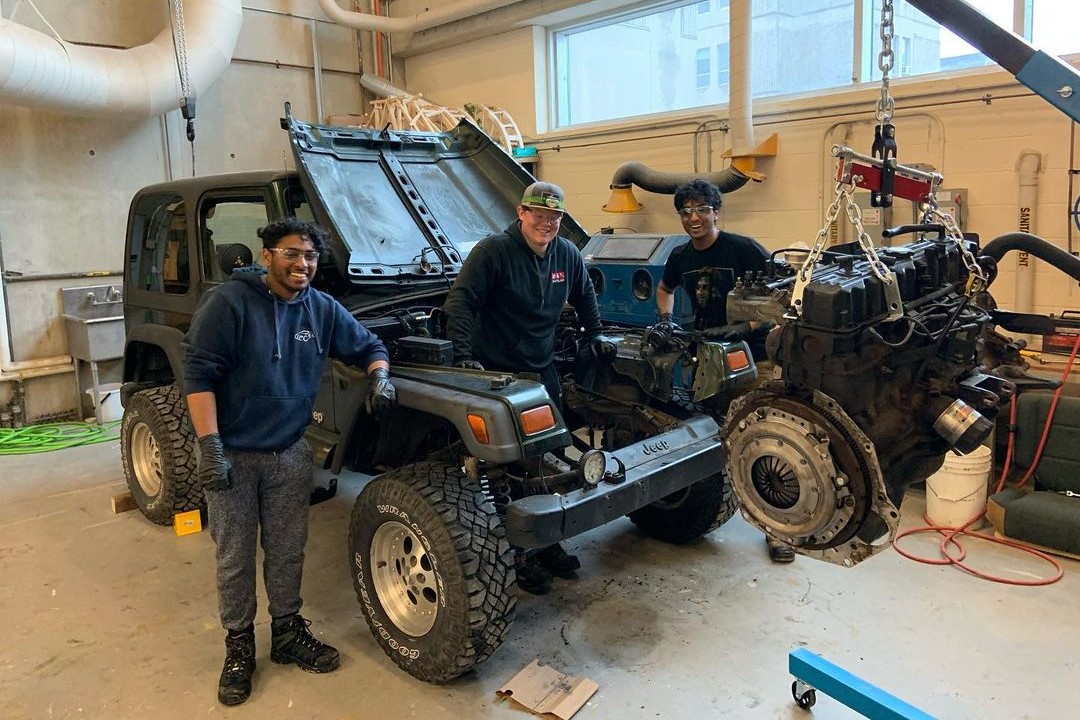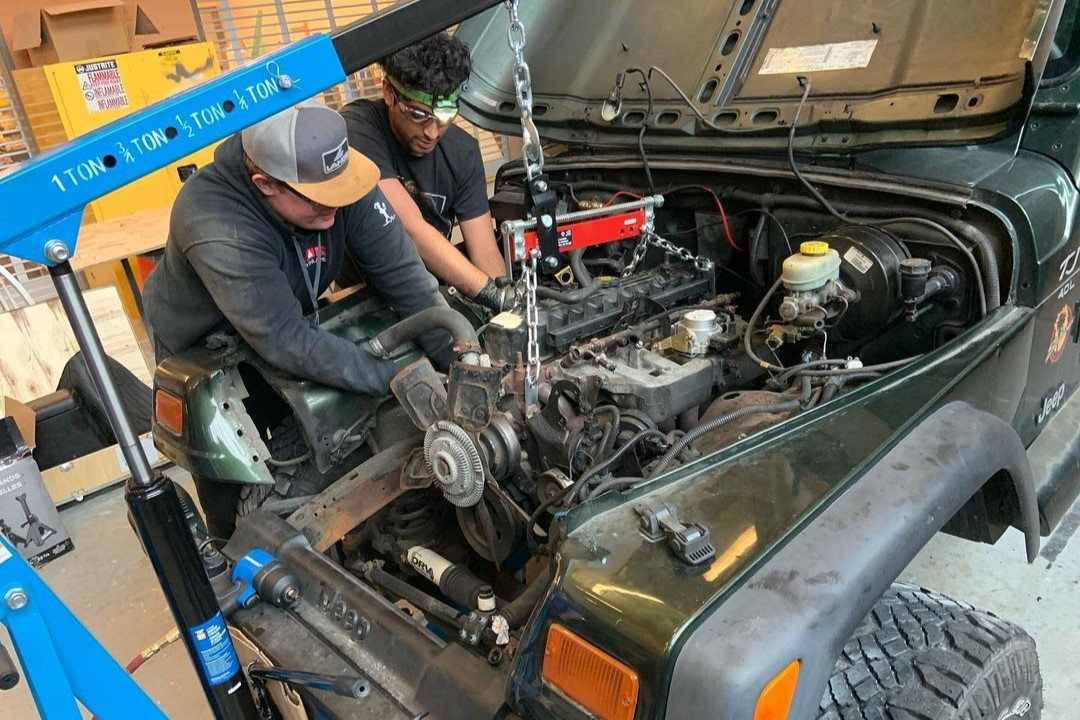
It is no secret that we’re amid the next great transportation revolution — this time from gas-guzzling vehicles to fully electric ones. There are around 20 million electric vehicles on the world’s roads now, but by 2030 there could be 350 million.
No doubt this transition will mean huge reductions in greenhouse gas emissions, but there are concerns. One of the thornier ones: what happens to all those old CO2-spewing vehicles that these new EVs will replace?
It’s a question at the heart of Queen’s Relectric Car Team, one of the university’s newest design teams. Their task is to figure out the best ways to convert gas vehicles to electric ones. The team started with a go-kart conversion and now they’re working on a full-sized vehicle, a 1997 Jeep Wrangler TJ, that they hope to one day take to car shows to demonstrate what’s possible.
The idea isn’t as strange as it sounds. Car companies like Toyota, Ford, and Chevrolet are all making big investments in conversion technology. Many of them already have — or will soon have — kits available for turning some of their gas vehicles into EVs.
That’s music to the ears of Relectric Team Captain Brandon Lewis, who joined the team when he discovered it featured hands-on opportunities that some of the larger sized teams couldn’t accommodate. As the team leader, incorporating that inclusive environment has become a personal mandate.
“Working with the Jeep this year, we have an assembly team dedicated to the restoration of the Jeep itself,” he says, “but any other general member who design a part, whether it be mechanical, thermal, electrical, will have some hands-on opportunity to put that system into place.”
“We have six different sub-teams which all have leads with dedicated tasks for the project. And we’ve done a big overhaul of what needs to be done with the Jeep to fully electrify it, to fully convert it.”
The third-year Mechanical Engineering student found a parallel between his coursework last year and the Relectric team, and the opportunity to immediately apply the lessons of the classroom excited him.
“Last year I really enjoyed my MECH 230 course, a thermal dynamics course,” he says, “and I saw that Relectric had a thermodynamics sub team. So I thought it would be great to expand my knowledge and actually put what I’m doing in the classroom to work, to figure out how to cool the batteries. And over the course of the eight-month process I was part of Relectric, I got hands-on work that actually correlated to what I was learning about, using equations, formulas, data sheets, that I myself never would have used if I hadn’t joined the team.”
“It really supplemented my learning, but I was also able to use that knowledge on a huge project that I absolutely loved.”
Founding team member Mira Teoli (Sc’22, Mechanical Engineering) is now pursuing a Master of Applied Science at Queen’s. For her, the regular meetings with members of the team’s alumni sponsor Class of 1974 were technically productive and also professionally inspiring. Most recently, two members attended Homecoming weekend this past October and met with the team.
“They were integral to getting us started, with some funding,” she says. “Some of the great highlights from my time on the team were the meetings with the Class of ’74 and learning from engineers who’ve gone through a lifetime of industry experience, and gaining their feedback.”
